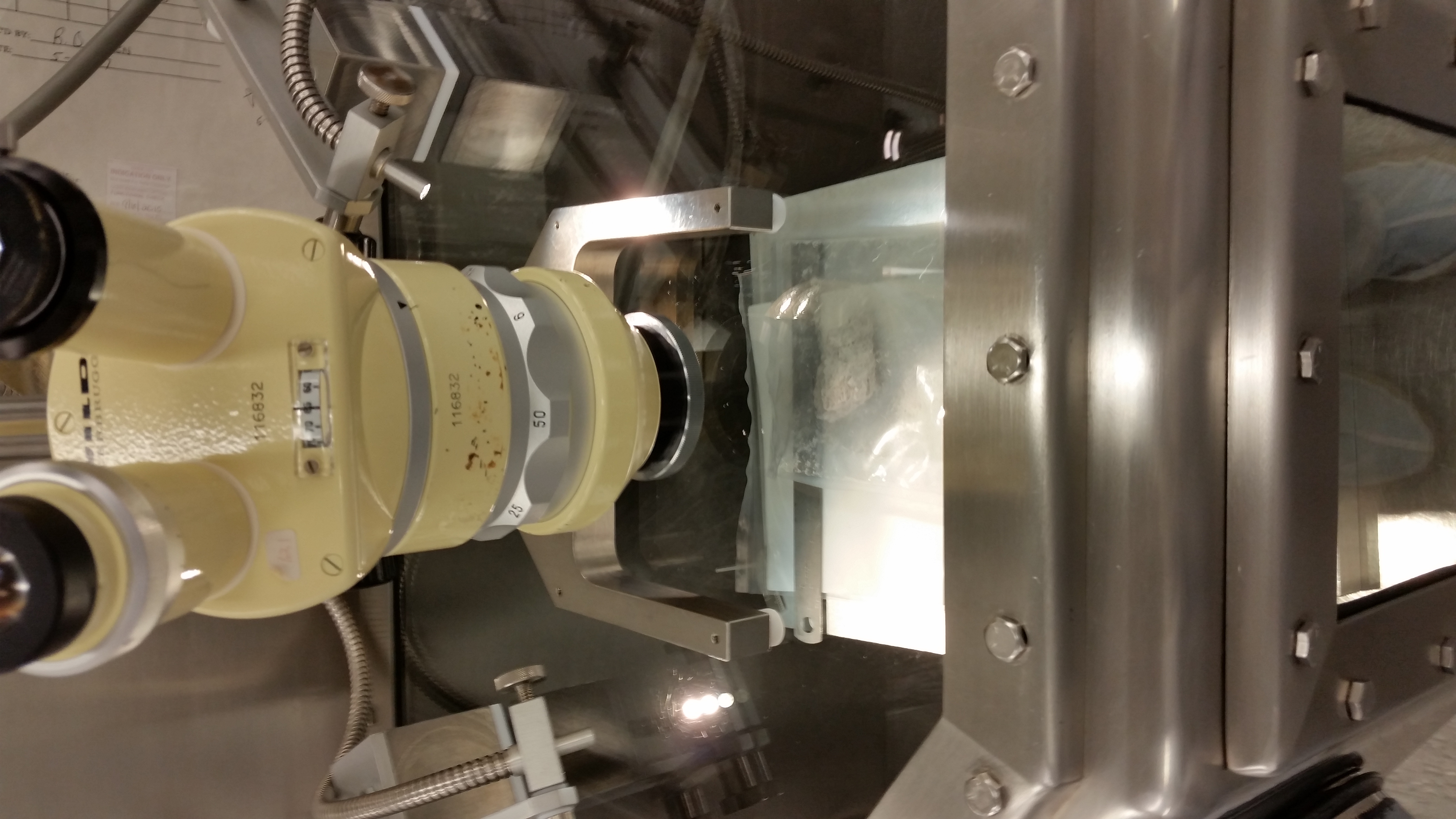Genesis Rock on:
[Wikipedia]
[Google]
[Amazon]
 The Genesis Rock (sample 15415) is a sample of
The Genesis Rock (sample 15415) is a sample of
 The Genesis Rock (sample 15415) is a sample of
The Genesis Rock (sample 15415) is a sample of Moon rock
Moon rock or lunar rock is rock originating from Earth's Moon. This includes lunar material collected during the course of human exploration of the Moon, and rock that has been ejected naturally from the Moon's surface and landed on Earth ...
retrieved by Apollo 15
Apollo 15 (July 26August 7, 1971) was the ninth crewed mission in the Apollo program and the fourth Moon landing. It was the first List of Apollo missions#Alphabetical mission types, J mission, with a longer stay on the Moon and a greate ...
astronaut
An astronaut (from the Ancient Greek (), meaning 'star', and (), meaning 'sailor') is a person trained, equipped, and deployed by a List of human spaceflight programs, human spaceflight program to serve as a commander or crew member of a spa ...
s James Irwin
James Benson Irwin (March 17, 1930 – August 8, 1991) was an American astronaut, aeronautical engineer, test pilot, and a United States Air Force Aviator, pilot. He served as Lunar Module pilot for Apollo 15, the fourth human lunar landin ...
and David Scott
David Randolph Scott (born June 6, 1932) is an American retired test pilot and NASA astronaut who was the List of Apollo astronauts#People who have walked on the Moon, seventh person to walk on the Moon. Selected as part of the NASA Astronaut ...
in 1971 during the second lunar EVA, at Spur crater on Earth's Moon. With a mass of , it is currently stored at the Lunar Sample Laboratory Facility in Houston, Texas
Houston ( ) is the List of cities in Texas by population, most populous city in the U.S. state of Texas and in the Southern United States. Located in Southeast Texas near Galveston Bay and the Gulf of Mexico, it is the county seat, seat of ...
.
Rock
Chemical analysis of the Genesis Rock indicated it is ananorthosite
Anorthosite () is a phaneritic, intrusive rock, intrusive igneous rock characterized by its composition: mostly plagioclase feldspar (90–100%), with a minimal mafic component (0–10%). Pyroxene, ilmenite, magnetite, and olivine are the mafic ...
, composed mostly of a type of plagioclase
Plagioclase ( ) is a series of Silicate minerals#Tectosilicates, tectosilicate (framework silicate) minerals within the feldspar group. Rather than referring to a particular mineral with a specific chemical composition, plagioclase is a continu ...
feldspar
Feldspar ( ; sometimes spelled felspar) is a group of rock-forming aluminium tectosilicate minerals, also containing other cations such as sodium, calcium, potassium, or barium. The most common members of the feldspar group are the ''plagiocl ...
known as anorthite
Anorthite (< ''an'' 'not' + ''ortho'' 'straight') is the
Lunar and Planetary Institute - Apollo 15
(From the ''Apollo Lunar Surface Journal'', scroll down to 145:41:48.) *Astronaut Scott examines the Genesis rock.
image
) * A
overview
of the samples collected by Apollo 15. (The Genesis Rock is sample #15415 and is described but not listed by its number.) {{Apollo program, state=collapsed Igneous rocks Apollo 15 Lunar samples David Scott James Irwin Pre-Nectarian
Solar System
The Solar SystemCapitalization of the name varies. The International Astronomical Union, the authoritative body regarding astronomical nomenclature, specifies capitalizing the names of all individual astronomical objects but uses mixed "Sola ...
, at least 4 billion years ago.
It was originally thought they had found a piece of the Moon's primordial crust, but later analysis initially showed that the rock was only 4.1 ± 0.1 billion years old, which is younger than the Moon itself, and was formed after the Moon's crust had already solidified. Research has shown that the Genesis Rock is not the oldest sample recovered from the moon, with sample 14321 (retrieved during the Apollo 14 mission) surpassing it. It is still an extremely old sample, formed during the Pre-Nectarian period of the Moon's history. Dating of pyroxene
The pyroxenes (commonly abbreviated Px) are a group of important rock-forming inosilicate minerals found in many igneous and metamorphic rocks. Pyroxenes have the general formula , where X represents ions of calcium (Ca), sodium (Na), iron ( ...
s from other lunar anorthosite samples gave a samarium–neodymium age of crystallization of 4.46 billion years. Other research methods approximate the age of the rock to be between 4 and 5 billion years old.
See also
* Apollo 15 operations on the Lunar surface *Hadley–Apennine
Hadley–Apennine is a region on the Near side of the Moon, near side of Moon, Earth's Moon that served as the landing site for the United States, American Apollo 15 mission, the fourth crewed landing on the Moon and the first of the "List of Apol ...
* Lunar sample displays
* Stolen and missing Moon rocks
References
External links
Lunar and Planetary Institute - Apollo 15
(From the ''Apollo Lunar Surface Journal'', scroll down to 145:41:48.) *Astronaut Scott examines the Genesis rock.
image
) * A
overview
of the samples collected by Apollo 15. (The Genesis Rock is sample #15415 and is described but not listed by its number.) {{Apollo program, state=collapsed Igneous rocks Apollo 15 Lunar samples David Scott James Irwin Pre-Nectarian